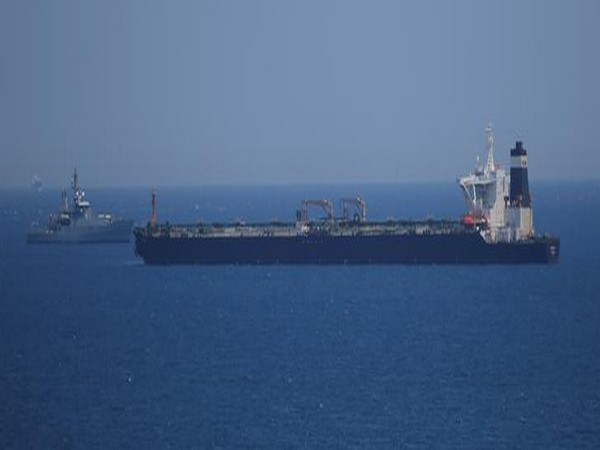BACKSTORY-Rough seas and restless nights - tracking the Grace 1 supertanker

- Country:
- Spain
Video journalist Marco Trujillo sat on his hotel balcony, eyes fixed on the silhouette of a supertanker in the Strait of Gibraltar, watching for the splash of an anchor chain or the smallest sign of movement.
A month earlier British commandos had seized the Grace 1 there over suspicions it was breaking EU sanctions by taking Iranian oil to Syria - placing the vessel at the center of a growing confrontation between Tehran and the West. After weeks of diplomacy and international legal wrangling, the Gibraltar authorities had just decided to lift the seizure order.
Now the world was watching to see when the ship would leave, where it would go and, ultimately, who would buy its crude. Trujillo was determined not to miss the moment it set sail. During the days, he and photographer Jon Nazca hired a fishing boat to get a closer look at the choppy waters - at one point witnessing the moment when it briefly raised the Iranian flag.
During the nights, he slept fitfully, fearing he would wake up to find the ship gone. "I admit that you become a bit crazy. It transforms into an obsession," he said. When it came to it, he was there watching as the vessel, now renamed "Adrian Darya 1", edged across his camera's viewfinder and out to sea just after 1 a.m. on Aug. 19, four days after the detention was lifted. "It was a relief and joyful feeling after so many days hypnotized by the ship," he said.
Then the real hunt began. Reporters in Reuters bureaus from Athens to Istanbul and London to Singapore watched the satellite feeds offered by Refinitiv – a data and analytics company in which Thomson Reuters has a minority stake - following tankers across the world. ERRATIC COURSE
They tracked an erratic course towards Greece, then Turkey, then Cyprus, then Turkey, then Lebanon and on. "In the space of 10 days, it punched in three different destinations, u-turning several times as it traversed the Mediterranean with a cargo of crude nobody officially wanted," said Greece and Cyprus bureau chief Michele Kambas.
The feeds could only supply so much information. The Turkey office sent cameraman Bulent Usta to the coast to scan the horizon. Correspondents phoned their sources to check each purported destination and cut through the rumours and fake sightings spreading on social media. "It became clear that ports in Syria and many other Mediterranean options were not big enough to accommodate a supertanker carrying 2 million barrels of oil," said senior shipping correspondent Jonathan Saul.
The most likely outcome now, the reporters concluded, was a ship-to-ship transfer, with the tanker waiting offshore to pump its crude into smaller vessels that could reach port. Then the ship's signal disappeared in the Mediterranean in early September, west of Syria. Days later, Britain's foreign ministry said it had evidence the tanker had indeed managed to sell its crude oil to the government of Syrian President Bashar al-Assad.
The hunt was over, and the reporters took a break from watching their satellite screens. Until last week, when Iran said it was about to release a British-flagged tanker it had detained in July in apparent retaliation for the seizure of the Grace 1.
The transponder of that ship - the Stena Impero - had last sent out a signal in the Strait of Hormuz. It bleeped back into life on the Refinitiv map on the morning of Sept. 27 and started heading out of Iranian waters.
(This story has not been edited by Devdiscourse staff and is auto-generated from a syndicated feed.)
ALSO READ
Cyprus president to discuss spike in migrants with EU chief, visit Lebanon
Israeli strikes have made south Lebanon a "devastated agricultural area", PM says
Israel launches strikes on eastern Lebanon after Hezbollah downs drone
Israel launches strikes on eastern Lebanon after Hezbollah downs drone
Israel kills Hezbollah field commander in Lebanon, UN urges halt to fighting










